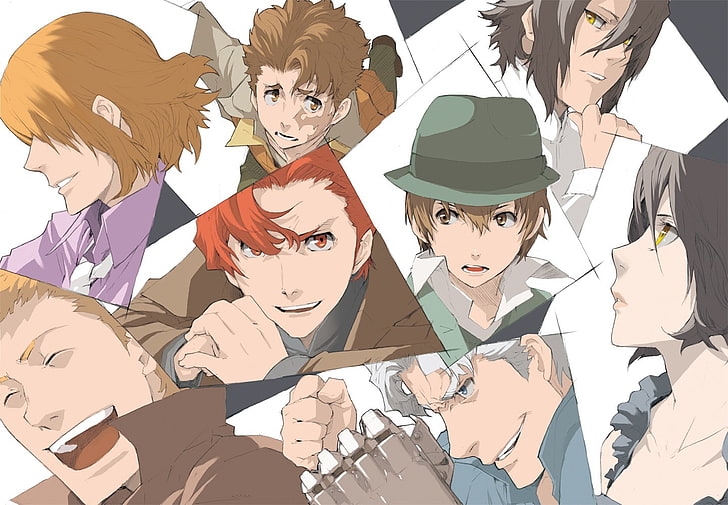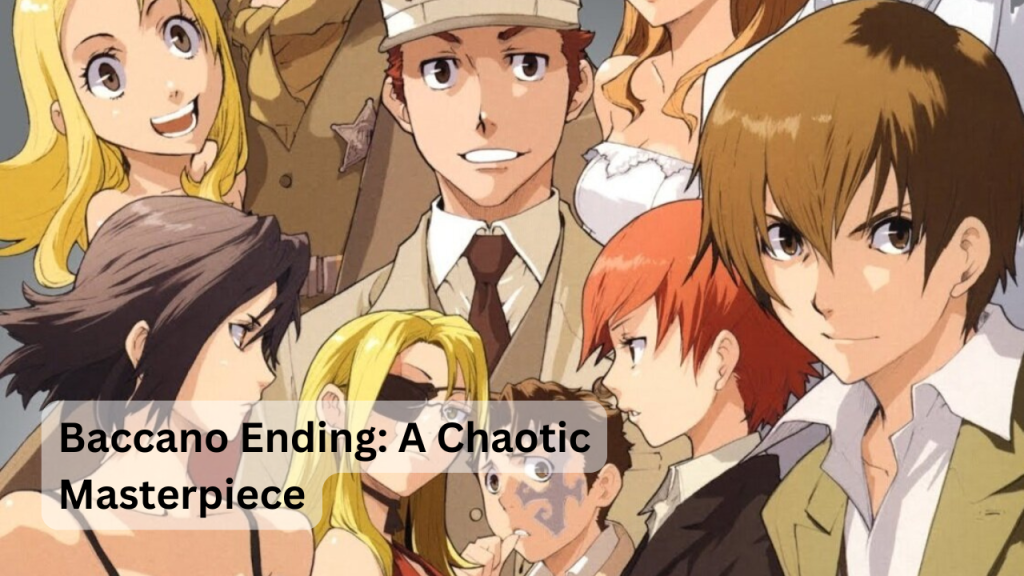Baccano Ending: A Chaotic Masterpiece
The Baccano ending stays true to the chaotic and non-linear nature of the series. The anime, which weaves together multiple timelines and character arcs, centers around the theme of immortality, mafia families, and alchemical experiments. Its conclusion leaves viewers with a blend of resolution and open-ended mysteries. The word “Baccano,” meaning “ruckus” or “chaos” in Italian, aptly describes the nature of the story and the unpredictable paths the characters take(Incidental Mythology)(Wikipedia).
Quick Answer:
The Baccano ending provides closure for certain major storylines, such as Firo’s relationship with Ennis, but many other plotlines remain unresolved, staying true to the show’s chaotic narrative. This open-ended conclusion invites viewers to piece together the fates of various characters, making it both mysterious and thought-provoking(Suki Desu – Cultura Japonesa).
Claire and Chane’s Arc: A Violent Love Story
One of the central threads in the anime’s conclusion is the relationship between Claire Stanfield (also known as the Rail Tracer) and Chane Laforet. Claire’s violent tendencies are highlighted throughout the series, especially aboard the Flying Pussyfoot train, where he leaves a bloody trail. However, his unexpected romantic feelings for Chane bring a softer side to his character by the end. His proposal to her adds an interesting layer to his otherwise violent persona(Everything Explained Today)(Suki Desu – Cultura Japonesa).
The ambiguity surrounding Claire’s future, especially with his ongoing violent nature, adds depth to his arc. While he shows love and devotion to Chane, his transformation isn’t complete. This unresolved tension is part of what makes the Baccano ending so intriguing, as it balances romance with lingering questions about Claire’s capacity for change.
The Fates of Dallas and the Immortals
Dallas Genoard’s fate is one of the most perplexing aspects of the ending. Having stolen the immortality elixir early on in the story, his punishment is severe—being entombed in concrete and sunk to the bottom of a river. By the end of the series, his fate remains unresolved, leaving viewers to speculate whether he will ever escape his underwater prison(Wikipedia)(Everything Explained Today).
On the other hand, characters like Firo and Ennis find more satisfying conclusions. After consuming the immortality elixir, Firo and Ennis are able to live together without fear of aging or death. Their relationship provides a more traditional happy ending, contrasting with the open-ended fates of many other characters(Wikipedia). Despite these pockets of resolution, the broader storylines involving the immortals, like the Gandor and Martillo families, remain unsettled, mirroring the chaotic essence of Baccano.
Non-Linear Storytelling and Its Impact
The structure of Baccano is one of its most defining features, and the ending reinforces this. The story unfolds across multiple timelines, primarily set in the 1930s, involving intersecting events that often overlap in surprising ways. This non-linear narrative adds a layer of complexity, as viewers must connect the dots between seemingly disparate events(Incidental Mythology)(Suki Desu – Cultura Japonesa).
The anime’s refusal to follow a traditional beginning-middle-end formula means the audience is left with a tapestry of events, some resolved and others not. The characters’ fates reflect this storytelling style, where immortals live on and their stories continue, potentially for centuries. This makes the Baccano ending feel like a moment in an ongoing saga, rather than a final conclusion(Wikipedia)(Everything Explained Today).

Themes of Chaos, Immortality, and Resolution
A core theme of Baccano is the chaos that stems from immortality. The elixir of life creates ripple effects across different timelines, involving multiple crime families, alchemists, and ordinary people. The immortality aspect is both a blessing and a curse for the characters, allowing them to live forever but trapping them in conflicts that transcend time(Suki Desu – Cultura Japonesa)(Wikipedia).
The Baccano ending reflects this theme, where not all the immortals find peace. Characters like Huey Laforet and his daughter Chane remain enmeshed in larger, unresolved conflicts, particularly involving crime syndicates and their quest for power. Meanwhile, some characters, such as Isaac and Miria, who add a lighter, comedic touch to the series, remain blissfully unaware of the chaos surrounding them. Their whimsical nature and happy-go-lucky attitude serve as a refreshing contrast to the darker elements of the series(Everything Explained Today).
Conclusion
In conclusion, the Baccano ending encapsulates the series’ chaotic essence by delivering a mix of resolutions and unanswered questions. Claire’s violent love story with Chane, the uncertain fate of Dallas, and the complex, ongoing lives of the immortals create a layered, thought-provoking finale. The anime’s non-linear narrative invites viewers to engage deeply with the story, connecting the dots between timelines and character arcs, while leaving room for interpretation and imagination(Suki Desu – Cultura Japonesa)(Wikipedia). Ultimately, Baccano remains a standout for its innovative storytelling, and its ending is as complex and chaotic as the story itself.


